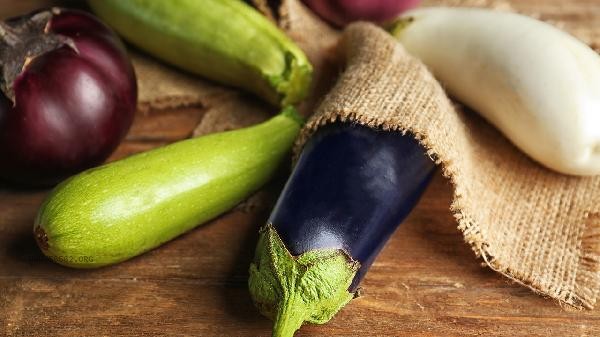Eggplant is prone to oxidation and blackening during stir frying, but through pre-treatment and cooking techniques, it can maintain a bright color and delicious taste. There are mainly methods such as rapid oiling, saltwater soaking, high-temperature stir frying, vinegar water treatment, and pairing with acidic ingredients.

1. Quickly oil
Put the cut eggplant into high-temperature oil and fry quickly for about 10 seconds. Remove and drain the oil. High temperature can instantly destroy the activity of oxidase, forming a protective film on the outer layer to prevent browning. After oiling, eggplants are less likely to absorb oil when stir fried, resulting in a more refreshing taste. Note that the oil temperature should reach 70% hot, as prolonged use can cause the eggplant to become soft and rotten.
2. Salt water immersion
Cut the eggplant into pieces and immediately soak them in 3% concentrated salt water for 5 minutes. Salt can penetrate the cell wall and precipitate phenolic substances, reducing the chance of contact with oxygen. After soaking, it is necessary to thoroughly drain the water to avoid water from affecting the pot temperature during frying. This method is particularly suitable for eggplant chunks that need to maintain their shape.
3. High temperature quick stir fry
Use a cast iron pot or thick bottomed pot to preheat over high heat until smoking, pour in cooking oil and cook until 80% hot, then add eggplant. continuously maintain maximum heat and stir fry quickly for 2-3 minutes. High temperature can quickly denature the surface proteins of eggplants to form a protective layer. It is recommended to use a long handled shovel to continuously flip and evenly heat up.

4. Vinegar water treatment
Mix 1 tablespoon of white vinegar with 500 milliliters of water to make an acidic solution. Slice the eggplant and soak it for 2 minutes before removing it. Acetic acid environment can effectively inhibit polyphenol oxidase activity, and treated eggplants can maintain a white state for more than 4 hours. This method is particularly suitable for the pretreatment of cold eggplant.
5. When stir frying with acidic ingredients [SEP], add acidic ingredients such as tomatoes, lemon juice, or vinegar simultaneously. Acidic substances can change the pH value of the cooking environment and delay enzymatic browning reactions. It is recommended to stir fry the tomatoes until they are soft and tender, then add the eggplants, or pour in half a spoonful of vinegar before removing from the pan and stir well. This can both preserve the color and enhance the freshness. Eggplant contains abundant anthocyanins and phenolic compounds, which are prone to enzymatic browning when exposed to air. For daily cooking, it is recommended to choose tender eggplants with a tight and glossy skin, and process them as soon as possible after cutting them open. When stir frying, it can be paired with green and red peppers, minced garlic, etc. to enhance the aroma and flavor, but it is necessary to avoid prolonged contact with utensils with high iron content. If you need to prepare vegetables in advance, you can seal and refrigerate the processed eggplants, but it should not exceed 2 hours. For people with weaker digestive function, peeling eggplants before cooking them is easier to digest and absorb.









Comments (0)
Leave a Comment
No comments yet
Be the first to share your thoughts!